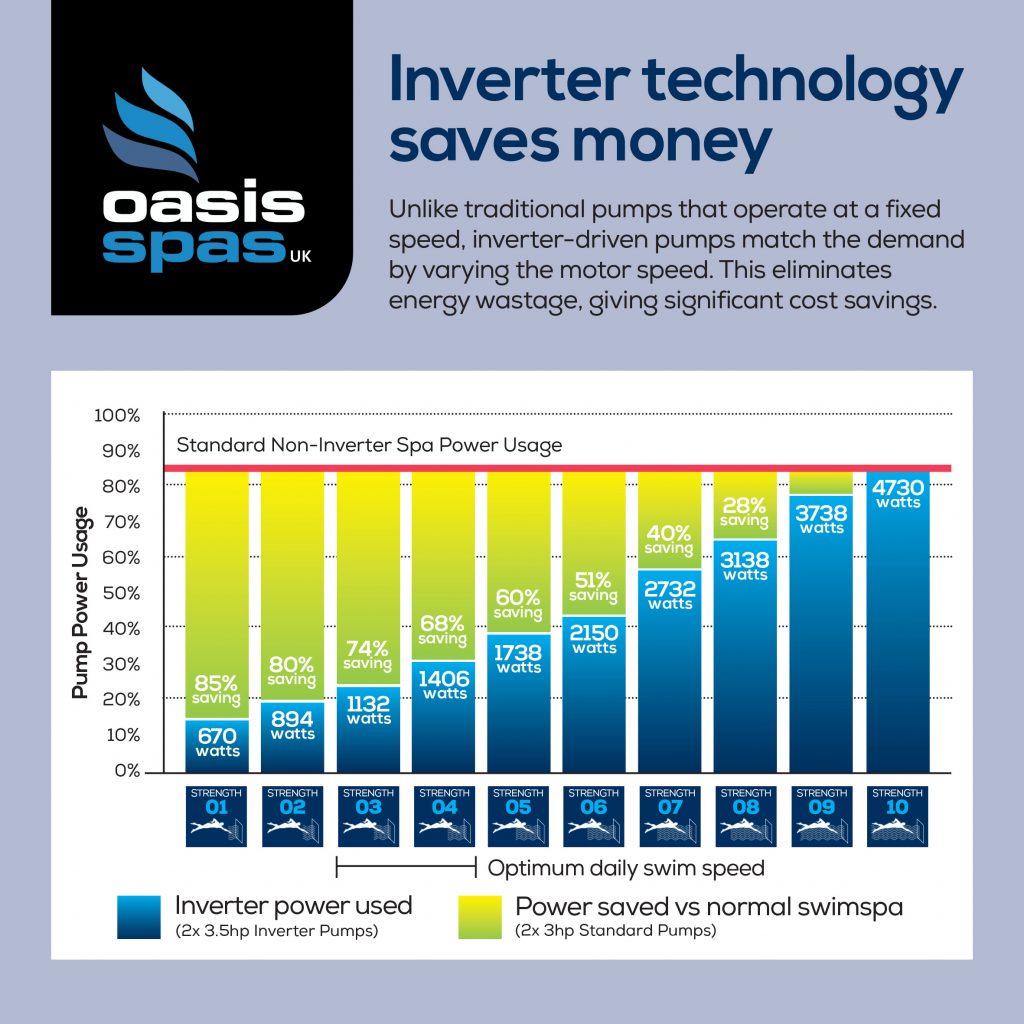10 Energy-Saving Hot Tub Efficiency Tips
According to Ofgem, from April 1 to June 30, 2024, the energy price for a typical household that uses electricity and gas and pays by direct debit will be reduced to £1,690 per year. This is £238 per year less than the price cap imposed between January 1 and March 31, 2024 (£1,928).’ This means that 2024 is the best time to purchase a hot tub.
- Optimise Temperature Settings
Keeping the water at a consistent temperature is one of the biggest causes of energy expenses. Think about turning the thermostat down a little. Over time, even a few degrees can have a big impact on energy usage. You may still enjoy a cosy, warm soak while keeping an eye on your energy costs. - Timing Is Everything
Utilising your hot tub off-peak can result in significant cost savings. Certain periods of the day, such as late at night or early in the morning, frequently have cheaper electricity costs. By taking advantage of these periods, you can reduce operating expenses without compromising your leisure time. - Invest in a High-Quality Cover
The most useful accessory for your hot tub is a sturdy, well-insulated cover.. Our insulating coverings lessen heat loss, retain heat, and cut down on the frequency of reheating. To preserve the hot tub’s effectiveness, always make sure the cover is securely fastened when not in use. - Regular Maintenance and Water Care
In addition to extending the life of your hot tub, proper maintenance makes it run more smoothly. Maintain the water’s chemical balance, clean the filters regularly, and look for leaks. Clean water circulates more efficiently, lowering energy usage and enabling the heater and pump to operate at their best. - Consider Energy-Efficient Upgrades
When the time is appropriate, look into energy-saving hot tub modifications. Modern hot tub models frequently have increased insulation and energy-saving features like efficient pumps. Even though there can be a one-time cost, there may be significant long-term savings. - Strategic Landscaping and Placement
The location of your hot tub can affect how much electricity it uses. Place your hot tub in a protected spot away from the wind and bad weather, if at all possible. Landscaping and natural barriers can help lower heat loss and the total amount of strain on the hot tub’s heating system. - Prevent your hot tub from foaming
If there is a persistent foam surge in your water, it can be costly both in terms of money and time. Numerous factors, including contaminated water, body and hair products that don’t work well with the hot tub, might cause it. If this occurs, you might need to empty your water completely and add additional chemicals to fill it back up. Algal accumulation brought on by low chlorine or bromine levels is one of the possible reasons of frothy or discoloured water. - Invest in an air source heat pump
By lowering your hot tub’s operating expenses, an energy-efficient air-source heat pump can save you up to 50% on your annual energy bills and pay for itself in two years. A low-carbon, sustainable substitute for conventional hot tub heating systems is provided by heat pumps. One of the most effective hot tub heating systems on the market, an air source heat pump may produce up to three times the heat of a conventional heating system. - Go for the real thing
Give up on the inflatable hot tub from the supermarket that looks like a rubber dingy; they simply don’t go together with obtaining value for your money. In terms of energy efficiency, less expensive inflatable hot tubs are not insulated, so the heat they produce cannot be retained, and once inside, you will have to continuously increase the temperature. In addition, their lifespan is not as long as that of an acrylic hot tub.
Visit us to see our 10-speed inverter swim spa, Riptide. Oasis Spas has been acknowledged with awards for being the most energy-efficient brand in the UK👋

